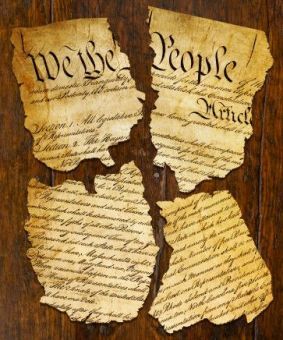UPDATE: Oral Arguments in Moore v. Harper
Yesterday's oral arguments in the controversial case about Independent State Legislature Theory provided clues but not answers about how SCOTUS will ultimately rule.

I listened to the oral arguments in Moore v. Harper Wednesday. You can listen to it on C-SPAN here or on the SCOTUS website here. The oral arguments were live-blogged here and here if you want to read a good summary. And many commentators will surely weigh in (e.g., here, here and here) in the coming days.
First, a background on the case in case you want to know more; otherwise, skip ahead to the bullet points. This case pits the GOP-dominated North Carolina Legislature against the North Carolina Supreme Court, which has a 4-3 Democratic majority. (The court is selected in partisan elections.) After the 2020 Census, the legislature drew a new congressional map, which the NC Supreme Court found was such a blatantly partisan gerrymander as to be unconstitutional. The NC Supremes accordingly struck it down.
Legislative leaders appealed to SCOTUS, not contesting it was a partisan gerrymander but saying, essentially, that the Constitution gave redistricting authority to the Lege and only to the Lege, under the Independent State Legislature Theory discussed in my previous post. SCOTUS decided to hear the case; in fact, four members of the Court urged the NC Lege to appeal on exactly that theory.

My observations and thoughts:
1) It is hard not to be impressed by the intelligence, memory and articulation of the parties before the Court, and of the Justices themselves. During three hours of oral argument, the lawyers discussed probably 30 cases, of which each had almost near-total recall. In a few examples, one of the attorneys would say something like, “Your Honor, as the Court stated on page 306 of its opinion in the Smiley case, … “
2) That said, their prodigious intellectual firepower is filtered, as it must be, through a worldview shaped long ago by each of the Justices and litigants. There were few indications that any of the Justices were going to look at the facts in Moore through newly-ground perceptual or philosophical lenses.
3) Accordingly, three members of the Court – Thomas, Alito and Gorsuch – seemed sympathetic to ISLT. Three others – Sotomayor, Kagan, and newcomer Ketanji Brown Jackson – seemed opposed to ISLT. That leaves three – Roberts, Kavanaugh, and Barrett – who will likely decide what ISLT looks like in application.
4) A maximalist application of ISLT would leave, as litigant Neal Katyal said, a “huge blast radius,” and the members in the middle seemed to be looking for a way to uphold the NC gerrymander without handicapping the ability of state executives or judges to oversee elections.
5) The Court will now consult among its members and decide an approach it wants to take, at which time the drafting of majority opinions and dissents will begin. Expect a decision in late spring, would be my guess.
